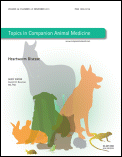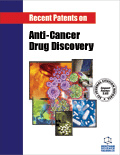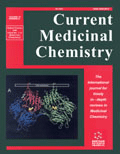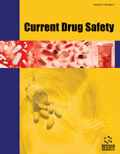
Journal of Venomous Animals and Toxins including Tropical Diseases
Scope & Guideline
Advancing Knowledge on Toxins and Tropical Health
Introduction
Aims and Scopes
- Venomics and Proteomics:
The journal extensively covers studies on the composition and functional analysis of venoms from a variety of species, including snakes, spiders, and other venomous animals. This research often employs advanced techniques such as proteomics to characterize venom components and explore their biological activities. - Toxinology and Therapeutic Applications:
A significant focus is placed on the therapeutic potential of venom components, including their use in drug development and disease treatment. This includes research on analgesic properties, anti-cancer effects, and other pharmacological applications of toxins. - Ecological and Evolutionary Studies:
The journal also addresses ecological and evolutionary aspects of venomous species, such as their interactions within ecosystems and adaptations over time. This includes studies on the evolutionary significance of venoms and their roles in predator-prey dynamics. - Clinical and Public Health Implications:
Research addressing the clinical implications of venomous bites and stings, including envenomation treatment strategies and the development of antivenoms, is a critical area of focus. This encompasses studies on the pathophysiology of envenomation and the socio-economic impacts of venomous species. - Innovative Methodologies:
The journal promotes innovative research methodologies in toxinology, including in vitro and in vivo experimental approaches, molecular techniques, and biostatistical analyses, contributing to robust scientific inquiry in the field.
Trending and Emerging
- Bioprospecting for Anti-Cancer Compounds:
There is an increasing interest in exploring snake venoms and other toxins for their potential anti-cancer properties. This trend reflects a broader shift towards utilizing natural products in cancer therapeutics, highlighting the importance of venoms as a source of bioactive molecules. - Immunomodulatory Effects of Venoms:
Emerging research is focusing on the immunomodulatory effects of various venoms, particularly in relation to autoimmune diseases and other inflammatory conditions. This theme underscores the potential of venom components in modulating immune responses and developing new treatments. - Neuroprotective and Neurotoxic Studies:
Research is increasingly addressing the dual roles of venoms in neuroprotection and neurotoxicity. Studies are exploring how specific venom components can protect neuronal cells from damage, suggesting a promising avenue for treating neurodegenerative diseases. - Advancements in Antivenom Development:
There is a growing emphasis on innovative approaches to antivenom development, including the exploration of new types of antivenoms and alternative therapies for snakebite victims. This reflects an urgent need to improve treatment outcomes in regions affected by snakebites. - Integration of Omics Technologies:
The use of omics technologies (genomics, proteomics, metabolomics) in toxinology is on the rise, allowing for comprehensive analyses of venom composition and function. This trend indicates a movement towards more integrative and systems-level approaches in understanding venomous species.
Declining or Waning
- Historical Perspectives on Venomous Species:
Research focusing on the historical context and evolutionary lineage of venomous species, while still relevant, seems to be less frequently published. This trend may indicate a shift towards more immediate applications and experimental studies rather than historical analysis. - General Studies on Venom Composition without Application Focus:
There appears to be a decrease in studies that solely describe venom composition without linking it to specific therapeutic applications or biological functions. This shift may be due to a growing expectation for research to demonstrate practical implications. - Non-Therapeutic Environmental Studies:
While environmental studies related to venomous animals are still published, there is a noticeable decline in research that does not directly tie back to health implications or therapeutic potential, suggesting a narrowing of focus towards more practical applications.
Similar Journals

Topics in Companion Animal Medicine
Exploring vital topics in the world of companion animals.Topics in Companion Animal Medicine is a prominent journal dedicated to the field of veterinary medicine, specifically focusing on small animals. Published by W B SAUNDERS CO-ELSEVIER INC, the journal boasts a commendable impact factor and ranks in the Q2 category among its peers, placing it 7th out of 20 in the veterinary small animals category according to Scopus metrics. With its ISSN 1938-9736 and E-ISSN 1946-9837, this journal features a diverse range of topics from clinical practices to innovative research, aimed at enhancing the health and well-being of companion animals. Since its inception in 2008, it has provided a crucial platform for disseminating knowledge and fostering discussion among researchers, veterinarians, and students alike. The journal's commitment to quality and relevance makes it an indispensable resource for those involved in the veterinary profession and companion animal care.

ANTIVIRAL THERAPY
Leading the charge in antiviral therapy advancements.ANTIVIRAL THERAPY is a prominent academic journal dedicated to the field of infectious diseases and pharmacology, published by SAGE Publications Ltd in the United Kingdom. Since its inception in 1996, this journal has become an essential platform for disseminating cutting-edge research and innovative therapeutic approaches for viral infections, making significant contributions to advancements in medical science. With an HIndex indicating the quality and influence of its published work, ANTIVIRAL THERAPY holds prestigious rankings in its categories, including Q3 in Infectious Diseases and Pharmacology as of 2023. While it currently does not offer open access, the journal provides valuable insights that are crucial for researchers, healthcare professionals, and students engaged in antiviral research and treatment strategies. As it converges towards 2024, the journal continues to play a vital role in shaping the understanding and management of viral diseases, making it a critical resource for anyone involved in this important field of study.

Recent Patents on Anti-Cancer Drug Discovery
Navigating the Landscape of Anti-Cancer InnovationsRecent Patents on Anti-Cancer Drug Discovery, published by Bentham Science Publishers Ltd, is an esteemed peer-reviewed journal specializing in the innovative intersection of pharmaceutical science and oncology. With an ISSN of 1574-8928 and an E-ISSN of 2212-3970, this journal aims to provide a comprehensive platform for the dissemination of recent developments in anti-cancer drug discovery, addressing critical issues and breakthroughs that influence cancer research and treatment. The journal spans from 2006 to 2024 and is indexed in several prestigious databases, showcasing its relevance with a Q3 ranking in key categories such as Cancer Research and Drug Discovery as of 2023. Its status of being open access reflects a commitment to making valuable scientific findings widely available, promoting collaboration and advancement in the field. With a dedicated focus on advancing knowledge in cancer therapeutics, the journal serves as a vital resource for researchers, healthcare professionals, and students aiming to contribute to the fight against cancer.

CURRENT MEDICINAL CHEMISTRY
Elevating Research Standards in Medicinal Chemistry.Current Medicinal Chemistry is a leading journal published by Bentham Science Publishers Ltd, known for its rigorous focus on the multifaceted realm of medicinal chemistry. With an ISSN of 0929-8673 and E-ISSN 1875-533X, the journal plays a crucial role in disseminating high-quality research findings that bridge the gap between chemistry and health sciences. Operating from Sharjah, United Arab Emirates, it has been a prominent scholarly resource since its inception in 1994, and is expected to continue until 2024. Current Medicinal Chemistry has earned its place in the academic community with an impressive impact factor and categorization in Q1 and Q2 quartiles across various disciplines, including Organic Chemistry, Biochemistry, Drug Discovery, and Pharmacology, highlighting its substantial contribution to these fields. Notably, it ranks 24th in Organic Chemistry and is within the 88th percentile, underscoring its appeal to researchers, professionals, and students alike who are keen on exploring cutting-edge advancements in drug design and development. Although it is not an open-access journal, it provides vital content that informs and inspires innovation in medicinal chemistry, appealing to a global audience committed to enhancing human health through scientific discovery.

Bulletin of Russian State Medical University
Connecting Ideas, Transforming HealthcareBulletin of Russian State Medical University, published by the esteemed PIROGOV RUSSIAN NATL RESEARCH MEDICAL UNIV, serves as a crucial platform for advancing the field of medicine, particularly in the context of Russian healthcare advancements. With an ISSN of 2500-1094 and an E-ISSN of 2542-1204, this journal has emerged as a valuable resource for researchers, professionals, and students alike, enriching the academic landscape since its inception. Although categorized in the Q4 quartile for Medicine (miscellaneous) and currently ranked #385 out of 636 in the Scopus database, its ongoing commitment to disseminating vital research and clinical studies positions it as a respected, though evolving, contributor to the global medical community. Operating without an open-access model, it ensures the dissemination of quality-controlled scientific information while maintaining professional integrity. Spanning the intersecting domains of healthcare practices and medical science, the journal strives to provide insights and promote discussions that address contemporary challenges in the field, making it an essential read for anyone looking to stay at the forefront of medical research and practices in Russia and beyond.

Current Drug Safety
Championing Research for Public Health and SafetyCurrent Drug Safety is a distinguished peer-reviewed journal published by Bentham Science Publishers, focusing on the critical intersection of pharmacology and toxicology. With an ISSN of 1574-8863 and an E-ISSN of 2212-3911, this journal serves as a platform for the latest research and advances in drug safety, highlighting the importance of pharmacological assessments and toxicity evaluations in therapeutic development and public health. Reaching a broad international audience from its base in the United Arab Emirates, Current Drug Safety offers an invaluable resource for researchers, professionals, and students interested in the dynamic fields of drug research and safety management. Despite a current Q3 categorization in multiple pharmacology and toxicology quartiles for 2023, the journal continues to strive for excellence in the scholarly community, reflecting its commitment to disseminating high-quality research. While not operating under an open access model, articles can be accessed through institutional subscriptions and other platforms, ensuring valuable insights into drug safety are available to those who need it most.

Biomedical Research and Therapy
Transforming research into impactful therapies for tomorrow.Biomedical Research and Therapy is a pioneering journal published by BIOMEDPRESS, dedicated to the field of biomedical sciences. With its ISSN 2198-4093, this journal aims to disseminate high-quality research and innovative therapies that advance knowledge in biomedical research. Although it operates on a non-open access model, it provides crucial insights into various topics such as drug discovery, disease mechanisms, regenerative medicine, and clinical applications. The journal's rigorous peer-review process ensures the publication of critical findings and methodologies, making it a vital resource for researchers, practitioners, and students interested in the constantly evolving landscape of biomedical research. With converged years from 2020 to 2024 and an emerging reputation in its field, Biomedical Research and Therapy is positioned to contribute significantly to the global scientific community, enriching the discourse around therapeutic advancements and biomedical innovations.

REVISTA DO INSTITUTO DE MEDICINA TROPICAL DE SAO PAULO
Unveiling Solutions for Tropical Health IssuesREVISTA DO INSTITUTO DE MEDICINA TROPICAL DE SAO PAULO is a prestigious open-access journal that has been publishing significant research in the field of tropical medicine since its inception in 1961. Produced by the Instituto de Medicina Tropical de São Paulo, the journal boasts a commendable Q3 ranking in both the categories of Infectious Diseases and Medicine (miscellaneous), as per the latest 2023 metrics. With an ISSN of 0036-4665 and E-ISSN of 1678-9946, it serves as a prominent platform for scholars and professionals to disseminate their findings and insights on pressing health issues prevalent in tropical regions, particularly those relevant to Brazil and beyond. This journal is essential for researchers and practitioners who seek to advance their understanding and apply innovative solutions in tropical medicine, thus addressing the distinct challenges posed by infectious diseases in diverse populations. The journal is accessible through various open access platforms, ensuring that critical research is available to a global audience, fostering knowledge sharing and collaboration.

TROPICAL BIOMEDICINE
Innovating research in parasitology.Tropical Biomedicine, published by the Malaysian Society of Parasitology and Tropical Medicine, is an influential journal dedicated to the field of infectious diseases and parasitology. Since its inception in 2005, the journal has aimed to advance scientific knowledge and foster research in tropical health, providing a vital platform for disseminating high-quality research findings, case studies, and reviews. With a Q3 ranking in Infectious Diseases and a Q4 in Parasitology for 2023, the journal plays an essential role in addressing the challenges faced in these fields, particularly in tropical and subtropical regions. Although currently not open access, its contributions are pivotal for researchers, healthcare professionals, and students dedicated to combating diseases prevalent in diverse ecological environments. By focusing on relevant topics and innovative approaches, Tropical Biomedicine seeks to enlighten and inspire the ongoing fight against tropical diseases, ultimately improving public health outcomes.

Biomedical and Biotechnology Research Journal
Empowering global collaboration in biotechnology research.Biomedical and Biotechnology Research Journal is a pioneering, peer-reviewed Open Access platform dedicated to the advancement of knowledge in the fields of biomedical science and biotechnology. Published by WOLTERS KLUWER MEDKNOW PUBLICATIONS since 2017, this journal offers a vital resource for researchers, professionals, and students alike, encompassing a wide range of topics from molecular biology to innovative biotechnological applications. With an impact factor reflecting its commitment to quality research, it proudly ranks in the Q3 category for Biotechnology in 2023 and holds significant positions in Scopus ranks, emphasizing its relevance in the medical and biochemistry sectors. The journal is based in India, and with its open access model, it ensures that cutting-edge research is readily available to a global audience, fostering collaboration and innovation in the rapidly evolving world of biomedicine.